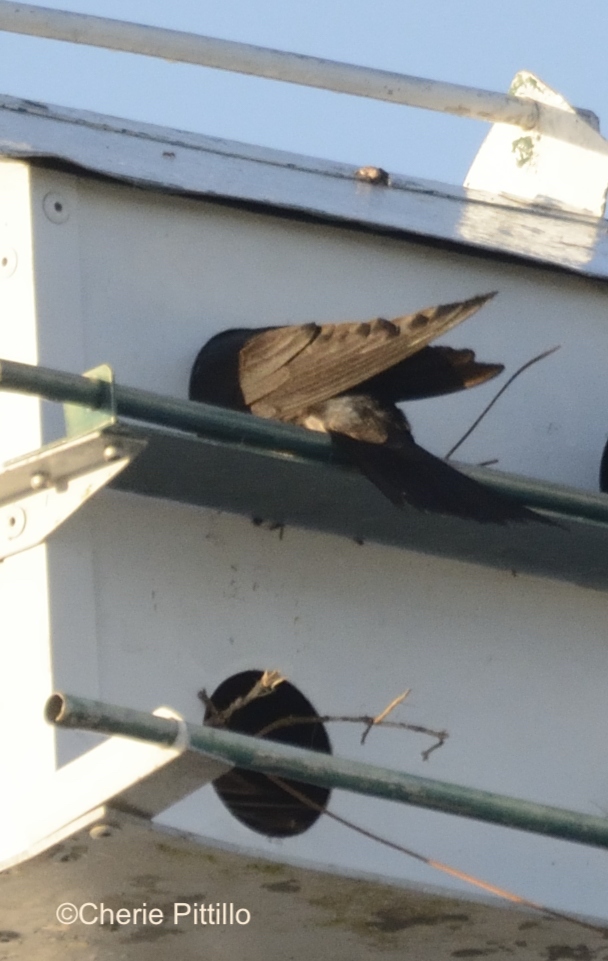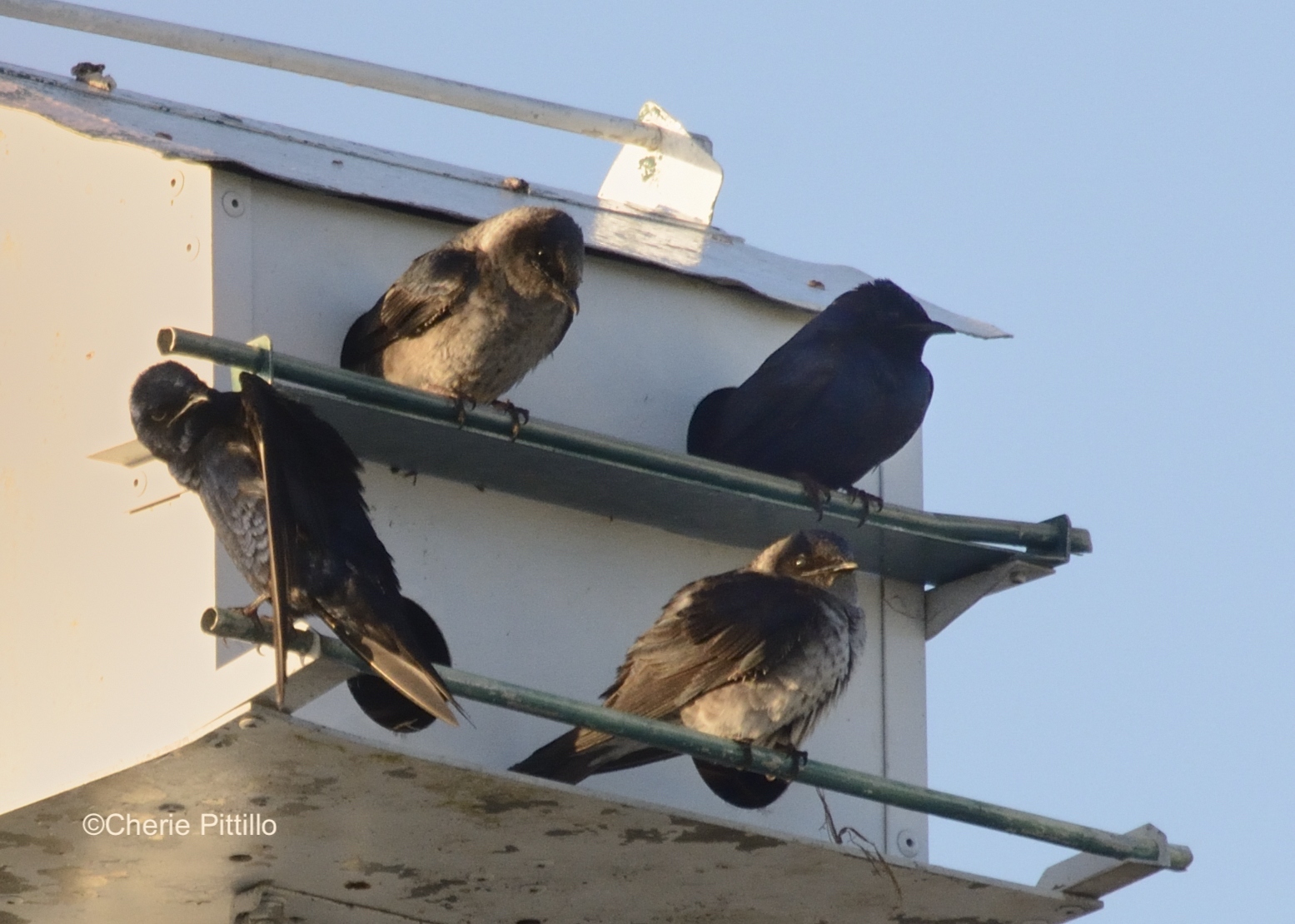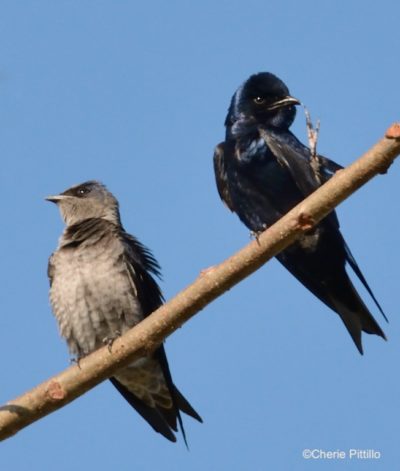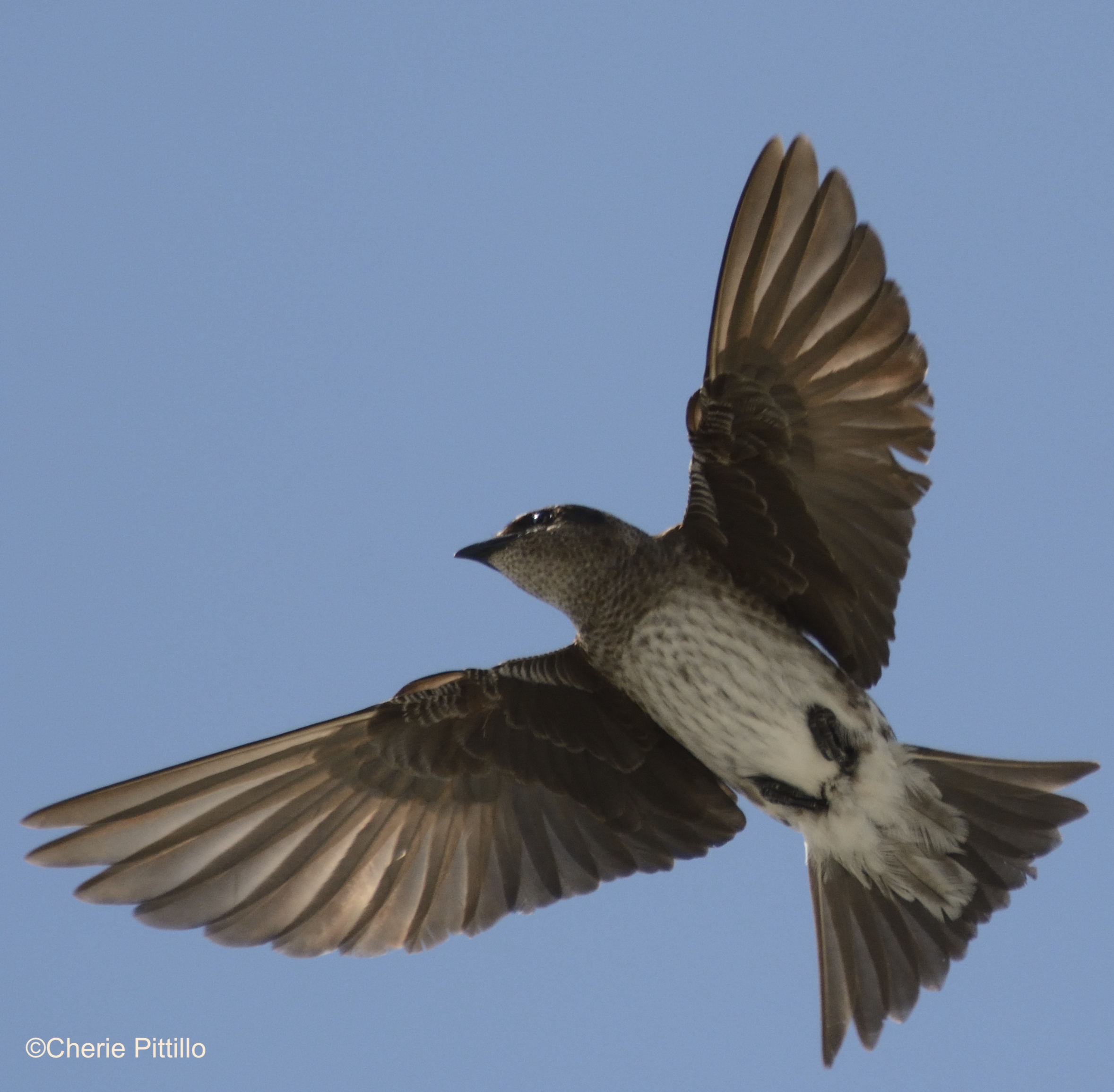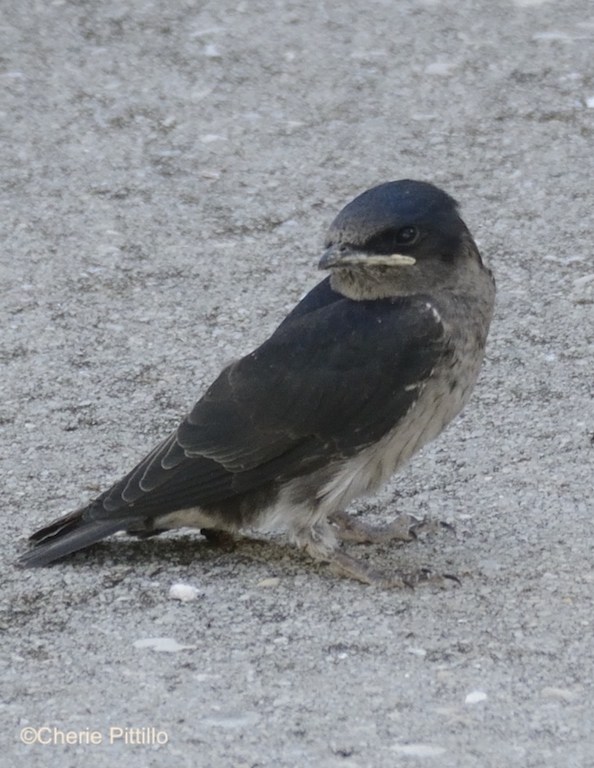Purple Martin Progne subis, Golondrina azul negra (Spanish), Kusam (Mayan)
After the female Purple Martin perched on the multi-room birdhouse edge, she looked into the first ‘floor’ nest hole. She reached inside, pulled out nest material, and flew upstairs to stash it in her own nest. Occasionally she would fetch pine needles and leaves but most of the time she stole it from downstairs. What a home wrecker!
Meanwhile a neighboring male martin stood guard at his nest. I never saw the thieving female attempt to steal the goodies next door of this Purple Martin “condo” I photographed in Florida.
Typical nests contain twigs, leaves, and stems with a mud lip to keep eggs contained. Also both sexes may bring green leaves to line the nest which may serve to retain heat during incubation, as an insecticide, or to add moisture to the nest. An eco-friendly condo?
Welcome to the somewhat colonial living of the Purple Martin, the largest swallow in the Americas and one of the largest in the world. This species breeds from Canada to N. Mexico and overwinters in S. America. More than 700,000 have been counted in one migration flock.
As a transient flyer, it is found throughout the Yucatan Peninsula on its migrations to and from Brazil and Bolivia and recently coastal Peru. I photographed this pair at El Zapotal Reserve in the Yucatan.
How great the adult male can be recognized with that dark blue-black glossy plumage unlike any other swallow species. (Note, it’s not called purple by the scientists?) But the female Purple Martin can be confused with the resident Gray-breasted Martin in the Yucatan except she sports a lightish collar on her nape.
In northern Mexico and the western US, the Purple Martin primarily nests solitarily in tree cavities, cliffs, cacti, and buildings. But east of the Rocky Mountains, this songbird typically depends on manmade birdhouses with multiple nest sites or several hanging gourds all in close proximity to people.
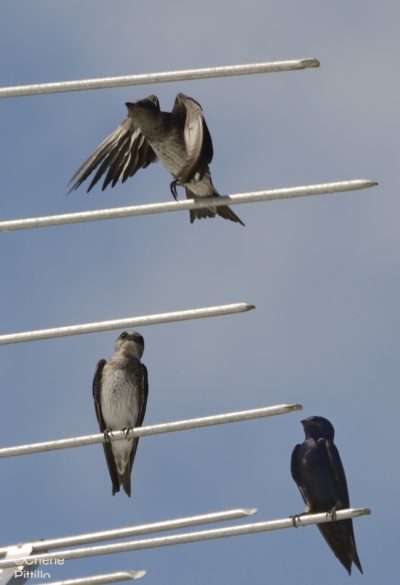
Purple Martins east of the Rockies depend upon people to supply their birdhouses and may perch on many manmade objects.
One theory supports that Native Americans hung gourds for the martins to nest near their drying meat. The martins would protect their nests and in turn drive away hawks or other birds of prey from the meat.
Several references state that only the female incubates the 3-6 eggs because she has a brood patch and the male doesn’t. Well, the male does sit on the eggs and sometimes the female has to force him off.
Young fledge in about a month and parents continue to feed them. In one photo it appears one fledged too early in comparison with other fledglings.
Most people that have martin houses tell me how the Purple Martin can eat 2,000 mosquitoes/day which sounds wonderful for those of us who suffer mosquito bites. Perhaps the birdhouse sellers use that for marketing. In reality, that claim isn’t based on fact as mosquitoes fly low and often more at night whereas these swallows fly high from 150- 500 feet to feed during the day.
Multiple studies plainly indicate the Purple Martin, an aerial insectivore, mainly dines on flying insects including wasps, flies, dragonflies, damselflies, beetles, butterflies, cicadas, winged termites and even grasshoppers. To aid in digestion of those insect exoskeletons, it picks up tiny gravel and even crushed eggshells.
Speaking of songbirds, the martin uses a variety of calls and songs from dawn until dusk at their condos and in flight variously described as juvenile, chortle, burble, hee-haw, zweet, zwrack, cher, croak, and choo calls, subsong, dawnsong, or combinations of them.
It’s a musical chorus at their condo and seemingly matched with aerial acrobatics and preening. What fun to hear and see their active lifestyle!
SOUND LINK:
NATURE AWAITS DISCOVERY, EVEN IN YOUR BACKYARD.
DISCLAIMER: ONLINE REFERENCES REALLY DON’T AGREE ABOUT THIS SPECIES. MANY USE OLD DATA OR REPEAT THE SAME COMMENTS WHETHER TRUE OR FICTION. I MAINLY USED BIRDS OF NORTH AMERICA ONLINE FOR GENERAL INFORMATION.
https://doi.org/10.2173/bna.287
https://www.hbw.com/species/purple-martin-progne-subis
https://birdsna.org/Species-Account/bna/species/purmar/foodhabits
https://www.purplemartin.org/research/3/research/
Stoles Guide to Bird Behavior, Sal a Pajarear Yucatan, Birds & Reserves of the Yucatan Peninsula, A Guide to the Birds of Mexico and Northern Central America, Sibley Guide to Bird Life & Behavior, Lives of North American Birds
Cherie Pittillo, “nature inspired,” photographer and author, explores nature everywhere she goes. She’s identified 56 bird species in her Merida, Yucatan backyard view. Her column, published on the 7th and 21st of each month, features anecdotes about birding in Merida, Yucatan and beyond. Contact: [email protected] All rights reserved, ©Cherie Pittillo




